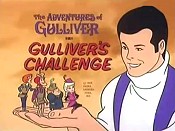Note: Several years ago now, I wrote a play for my sons, nieces and nephews, to be performed on Christmas night. They didn’t exactly know about it ahead of time, but man, did they ever get into it. They made costumes and props, and even created voices for the characters. (We sort of got a Von Trapp thing going on.)
The play is about the creation of the song “Silent Night” and is based on a play I did when I was in sixth grade– WAY back in the early 80s. I never knew who wrote this play or why my sixth grade teacher had a copy of it. (It wasn’t in a book or anything. It was just typed pieces of paper that she mimeographed for us. Ah, the early 80s!)
I tried to find it on the Web, and when that went nowhere, I eventually ended up writing a version of my own. I used the play’s basic story and borrowed some of the lines I remembered. (Yep, I actually remember lines I said in a Christmas play over thirty years ago… but I can’t remember to pick up groceries when my wife reminded me ten minutes before.)
After our performance, I figured, “Hey, maybe there’s another family out there who wants to put on a goofy Christmas play.” And so, I offer to the world my vaguely historical play about the creation of the song “Silent Night.” Take it, perform it, manipulate it… just don’t make millions off it!
The Story of “Silent Night”Dramatis Personae
- Frolic, narrating elf
- Play, narrating elf
- Father Nostler, grumpy pastor
- Father Mohr, writer of the poem on which “Silent Night” is based
- Julia Bauer, kindly parish secretary
- Greta Bauer, Julia’s young daughter
- Franz Gruber, schoolteacher, organizer, and composer of the music for “Silent Night”
- Mr. Zingler, organ repairman
- Maggie Mouse, Myrtle Mouse, Morgan Mouse, Maynard Mouse–Mice who eat the pipes of the organ
The main action of the play takes place in the small town of Oberndorf, Austria, in December 1818.
Prologue
Frolic: “You know Dasher…”
Play: “And Dancer…”
Frolic: “And Prancer…”
Play: “Look, we already established that they know ‘em… why are we going through the whole list?”
Frolic: “Good point. But do you think they know a certain C. Clement Moore?”
Play: “Who he?”
Frolic: “Why, the author of the beloved Christmas poem ‘A Visit from St. Nicholas,’ you silly.“
Play: “’A Visit from St. Nicholas’? I never heard of—“
Frolic: “That’s because it’s better known by its first line, ‘’Twas the Night Before Christmas.’”
Play: “Ah! Got it!”
Frolic: “C. Clement Moore is one of the greatest One-Hit Wonder Poets of all time. And what is a One-Hit Wonder Poet, you ask? It’s a poet who gains mainstream popularity by writing one well-known poem.”
Play: “How awesome is that? Minimum effort, maximum achievement!”
Frolic: “Indeed. Well, my name is Frolic, and this is my counterpart Play.”
Play: “Howdy!”
Frolic: “We are two jolly elves, and tonight we would like to ask a simple question: ‘But do you recall the most famous One-Hit Wonder Poet of all?’”
Play: “You mean Francis Scott Key, the author of ‘The Defense of Fort McHenry,’ which later became the basis for the ‘Star Spangled Banner’?”
Frolic: “Uh, no. It’s a Christmas-themed One-Hit Wonder Poet.”
Play: “Maybe Ernest Thayer, who wrote the classic baseball poem, ‘Casey and the Bat’?”
Frolic: “No, you nitwit. Just pipe down and listen, will you? Now then… we begin our story in a church in the small town of Oberndorf, Austria. ‘Twas the night before the night before Christmas, in the year 1818, and four local mice—Maggie, Morgan, Maynard, and Myrtle—are doing more than stirring; they’re looking for a snack.”
Scene 1
Maggie Mouse: “Hey, what did one snowman say to the other?”
Morgan Mouse: “I don’t know. What?”
Maggie: “’Do you smell carrot?’” (They both laugh uproariously.)
Maynard Mouse: “OK, how about this one: how do elves greet Santa when he returns home?”
Myrtle Mouse: “I don’t know. How do elves great Santa when he returns home?”
Maynard: “With a round of Sant-applause.”
Myrtle: “I don’t get it.”
Maynard: “Round of applause… Santa applause… Sant-applause? Ah, you didn’t like it. It’s stupid.”
Myrtle: “No, it’s good. I guess I’m just a little out of it, that’s all. I think I need something to eat.”
Maggie: “Me too. Let’s find something to eat around here. Hey, I know: why don’t we sink our teeth into that organ?”
Morgan: “What?!? Don’t eat me!”
Maggie: “Not Morgan! Organ! That pump organ over there!”
Maynard: “I love organs! Mangia! Mangia!”
Myrtle: “Isn’t that Italian? I thought this play takes place in Austria…”
Morgan: “Don’t quibble with details! Just eat!” (They all start chomping away.)
Maynard: “Hey, you know what would happen if someone dropped an organ on a musician?”
Maggie: “What?”
Maynard: “He’d B flat!”
(They all eat and laugh uproariously!)
Scene 2
Play: “Don’t blame the mice. They were hungry, and they are just mice, after all. How would they know their late-night snacking would render the pipe organ completely useless?”
Frolic: “We pick up our story the next morning, as the church’s pastor, the already cranky Father Nostler, absolutely blows a gasket upon they would have no organ music for the Christmas Eve mass.“
Fr. Nostler: “Father Mohr? Father More? FATHER MOHR!”
Fr. Mohr (running in): “Yes, Father Nostler. You called?”
Fr. Nostler: “No, I was merely exercising my tonsils. Of course, I was calling you! Has the organ repairman arrived?”
Fr. Mohr: “Oh, yes. His name is Mr. Zingler, and he came first thing this morning.”
Fr. Nostler: “Excellent. And do you have any news to report?”
Fr. Mohr: “Oh, yes. I have some news. According to Mr. Zingler… the organ will most definitely not be ready for tonight’s mass.”
Fr. Nostler: “That’s it? That’s your news?”
Fr. Mohr: “I didn’t say it was good news. Look, Father, what can I say? The mice totally ate away at the bellows—“
Fr. Nostler: “Bellows?”
Fr. Mohr: “Yeah, you know… those flexible chambers of air that make a sound when compressed?“
Fr. Nostler: “I always referred to them as ‘windbags’…”
Fr. Mohr (aside): “Well, it takes one to know one…”
Fr. Nostler: “What was that?”
Fr. Mohr: “Nothing. As I was saying… I’m sorry this happened, but no one could have known the mice were up there. It’s winter, you know. I guess they were hungry.”
Fr. Nostler: “You guess they were hungry?” (in a mocking tone) “ ‘It’s winter, you know.’ Of course, I know it’s winter! I also know that this is Christmas Eve. And I know that, as of right now, we’ll have no organ music for the service tonight! How can you have Christmas Eve mass without music?”
Fr. Mohr: “Well, I was talking to Franz Gruber tis morning, and he was thinking he could lead the whole congregation in a sing-along, without any accompaniment?”
Fr. Nostler: “A sing-along? A sing-along? Is Gruber insane? This is church, not a bar-room! Singing without accompaniment—that’s so undignified! And besides: have you heard the voices of some of our parishioners? They sound like strangled alley cats—especially that Mrs. Krause in the fourth pew!”
Fr. Mohr: “Now, that’s not nice. Ms. Krause has a lovely voice… she just uses a different set of notes than the rest of us.”
Fr. Nostler: “You are going to fix this.”
Fr. Mohr: “Mrs. Krause’s singing?”
Fr. Nostler: “No! The organ! You are going to fix this mess with the organ and get me some music for tonight’s Mass!”
Fr. Mohr: “But… what am I supposed to do?”
Fr. Nostler: “That’s your problem, not mine!”
Scene 3
Frolic: “Well, it looks like our friend Father Joseph Mohr is in quite a pickle. So he does what all priests do when they’re in a jam: seek out advice from the smartest person in the parish, the power behind the throne, the real brains of the organization.”
Play: “The kindly parish secretary!”
(Julia is sitting down with Fr. Mohr, going over a few things. Julia’s young daughter is playing with dolls by her feet.)
Julia: “I sent the food we collected to the soup kitchen. We collected over fifty coats in the coat drive, and I had them delivered to the shelter. Fr. Nostler wanted new clerics; they’re hanging in the closet.”
Fr. Mohr: “I just remembered: I forgot to send a Christmas card to the bishop.”
Julia: “Already done. Hope you don’t mind that I forged your signature. “
Fr. Mohr: “Thank you so much. You’re a miracle worker. How could I ever repay you for everything you’ve done?”
Julia: “Well, you could let me go home a little earlier, so I could give Greta a bath for tonight?”
Fr. Mohr: “You got it. And speaking of Greta, I have something for her. A gift.” (He hands her a piece of paper.) “It’s a poem. It came to me—out of the blue—while I was walking back to the rectory the other night. It wasn’t that late, but no one else was around. A light snow had started to fall, and everything was so very still and quiet. I started thinking about the first Christmas, about the night Jesus was born. And I guess I just got inspired. As soon as I got home, I jotted down this poem.”
Julia: “You know I love your poems. “ (reads) “’Silent night, holy night./ All is calm, all is bright.’”
Fr. Mohr: “It’s simple, but…”
Julia: “You are so talented, Father. You should really try to get your poems published somewhere.”
Fr. Mohr: “Ah, who’d want to read them? Great poets speak to the entire world. I’m just some Austrian priest. It’s not as if my words could affect anyone.”
Julia: “Well, this is so very thoughtful of you. Thank you so much. I’ll read it to Greta tonight.”
(Mr. Zingler, the organ-fixer, barges in.)
Mr. Zingler: “Stupid, no-good mice! Treating my organ like it’s a buffet! You wanna take a bite out of my organ? Huh. When I find you varmints, I might just take a bite out of you!”
Julia: “Ah yes… the classic Christmas Eve treat!”
Fr. Mohr: “Well, Mr. Zingler. How’s our patient? Salvageable?”
Mr. Zingler: “Are you kidding me? Maybe by Pentecost… but not for tonight!”
Fr. Mohr: “I just don’t know what I’m going to do. If I don’t find a way to provide music for tonight’s service… well, Fr. Nostler will not exactly be overflowing with Christmas cheer.”
Julia: “Is he ever? Look, God has a reason for everything. Think of this not as a problem, but an opportunity. Perhaps there is a very easy answer for this, if we just keep our eyes open. The solution could just walk in through our door when we least expect it.”
(At that moment, as if on cue, Franz Gruber walks in through the door, carrying a guitar.)
Franz: “Merry Christmas, everybody!”
Fr. Mohr: “Merry Christmas to you, Franz. What’s going on with the guitar?”
Franz: “Oh, this is a guitar I used when I was a kid. I cleaned it up and got it re-strung, and I am going to give it to my son tomorrow as a present.” (pause) “So, how are things going with the organ?”
Fr. Mohr: “Well, it looks as if we’ll be able to have a great Christmas Mass on Pentecost.”
Julia: “Let’s just brainstorm some possibilities.” (Fr. Mohr, Julia, and Mr. Zingler sit around Julia’s desk, while Julia’s daughter Greta continues to play on the floor. No one speaks. The ideas aren’t exactly flying back and forth. Meanwhile, Franz sits slightly off to the side and starts strumming his guitar. He’s playing something random, something they had never heard before– a quiet, contemplative song.)
Fr. Mohr: “Maybe you could sing for us, Julia? After all, who needs a musical instrument with a voice as lovely as yours?”
Julia: “Thank you, Father. But you know I never sing in public.”
Fr. Mohr (after long seconds of silence): “Could we maybe borrow an organ from another church?”
Mr. Zingler: “Borrow an organ? Who’s going to carry it—you? Besides, what will that church use for Christmas?” (They go back to silence, as Franz continues to play that new song on the guitar.)
Julia: “Franz, what is that you’re playing? It’s beautiful.”
Franz: “Oh, thanks. It’s just something I came up with a few weeks ago. Hope I didn’t disturb anyone. Playing quiet music on the guitar helps me think.”
Fr. Mohr: “Well, by all means, keep playing. Maybe it will inspire us. What could we possibly use in church in place of the organ? Is there any sort of lightweight, portable instrument that we could use to accompany the singers? Is there anything we are overlooking? Anything at all?” (They go back to silent thinking.)
Greta (from the floor): “Why not guitar?”
(They all think about it for a moment.)
Fr. Mohr: “A guitar? In church?”
Mr. Zingler: “Impossible. Can’t be done!”
Julia: “Why? Because it hasn’t been done before? Not a very good reason. Why can’t we use the guitar tonight, in place of the organ?
Fr. Mohr: “She’s right. It’s so obvious. How did we not see it? We use the guitar for accompaniment! Franz, can you learn some Christmas songs on guitar?”
Franz: “Of course.”
Mr. Zingler: “Fr. Nostler isn’t going to like this!”
Julia: “All the more reason to do it!” (She picks up Greta and twirls her.) “Oh, Greta, you saved the day!”
Scene 4
Play: “OK, so we have the words to ‘Silent Night,’ and we have the music to ‘Silent Night,” but when do the two parts come together?”
Frolic: “I’m glad you asked. The melding of the two halves took place only an hour before Christmas Mass, in a quick meeting between Franz Gruber and Julia…”
Julia: “OK, and how about the closing song? What are you going to do for that?”
Franz: “I was thinking ‘Grandma Got Run Over By a Reindeer’… (Julia looks at him blankly.) “Just kidding. How about ‘Joy to the World’?”
Julia: “Sounds great. Hey, I was thinking of something. You said you were going to play ‘O Holy Night’ for Communion. I have an idea for something to do immediately after that, something we can do for Father Mohr, as a gift.”
Franz: “A gift? What is it?”
Julia: “Remember that song you were playing today? That quiet, contemplative one? Well, I was thinking how perfectly that music matched up with a poem Father showed me today.” (She takes out the paper.) “I was wondering if maybe you could turn this poem into a song and sing those lyrics at Mass tonight.”
Franz (scanning the lyrics): “Well, it’s certainly last-minute… but I think it’s possible. But on one condition: you sing it. Please. You have such a lovely voice. It’s a talent, given to you by God. Just like how Father’s talent with words is a gift. You know what Jesus said in His parable about the talents: you can’t bury your talents down deep. You have to show those talents to the world.”
Julia (smiling shyly): “Ok, I’ll do it. Let’s go practice.”
Scene 5
Frolic: “And that’s the story of how the song ‘Silent Night’ came to be.”
Play: “I’m sort of dubious about the historical accuracy of that story…”
Frolic: “Well, we may have modified a few of the details for dramatic purposes…”
Play: “Like the talking mice? What about the little girl saving the day? Or that Franz Gruber just so happened to have music that exactly fit the poem?”
Frolic: “OK, we may have taken some liberties there. But the words really were written by Father Joseph Mohr, and the music really was composed by Franz Gruber, and the two really did debut the song in their church on Christmas Eve, 1818.”
Play: “And the performance was so lovely and stirring that it even brought a smile to the face of Father Nostler, whose heart grew three sizes that day…. Right?”
Frolic: “Well, not really, but sure. Why not? It’s Christmas! Now, before we close, let’s return to Father Mohr’s church, as our merry band performs ‘Silent Night’ for the very first time.”
Play: “Can we join in too?”
Frolic: “Well, we’re not really part of the action, Play. We’re the narrators!”
Play: “Oh, come on! Why quibble with details!”
Frolic: “Oh, what the heck! Let’s do it! And invite the mice too! Hit it, Franz!”
(All twelve members of the cast sing “Silent Night.”)
Silent night, Holy night
All is calm, all is bright
‘Round yon virgin , mother and child
Holy infant so, tender and mild
Sleep in heavenly peace,
Sleep in heavenly peace.
Silent night, Holy night
Shepherds quake, at the sight
Glory streams from heaven afar
Heavenly, hosts sings Hallelujah.
Christ the Savior is born,
Christ the Savior is born.
Silent night, Holy night
Son of God, love’s pure light
Radiant beams from thy holy face
With the dawn of redeeming grace,
Jesus, Lord at thy birth,
Jesus, Lord at thy birth.
ALL” “Merry Christmas!”

 was this: why not write a blog entry on the songs randomly playing on my iPod during my run? Hey, it’s just as inane as 91% of all the other stuff on the Web, right? So, in a very much particular order:
was this: why not write a blog entry on the songs randomly playing on my iPod during my run? Hey, it’s just as inane as 91% of all the other stuff on the Web, right? So, in a very much particular order:






